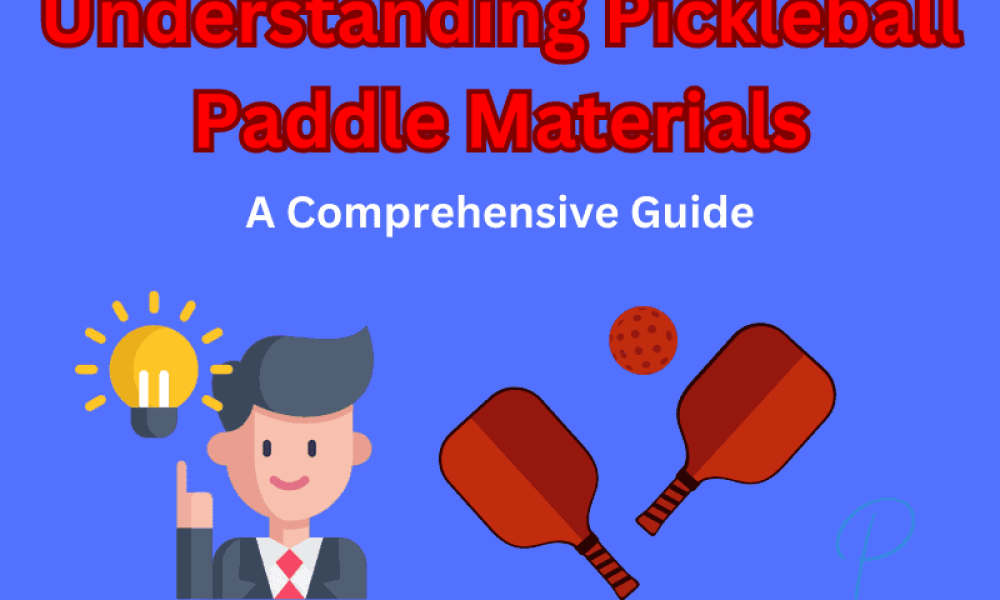Have you ever wondered what makes a great pickleball paddle?
The power behind your serves, the finesse in your dinks, the maneuverability at the net – it all comes down to more than just technique or style.
The secret could very well lie in the substance of your gear: the pickleball paddle material.
Welcome to a fascinating world of pickleball paddle materials, where we look into the heart of what makes up these indispensable game-changers. Whether you’re a seasoned player, a casual enthusiast, or a pickleball newbie, understanding the intricacies of your paddle’s composition can provide you with valuable insights into your game.
Ready to understand what makes pickleball paddles work?
We’re going to explain it, focusing on one type of material at a time. Different materials like graphite, composite, polymer, and wood each change the way your paddle works and might help you play better.
Come along as we learn more together, all to help you understand pickleball paddles better.
Let’s get started!
Short Summary:
- Understanding the unique properties of pickleball paddle materials is key to choosing the right one.
- Hybrid paddles provide a balance between power and control, while core material can influence performance.
- Consider noise level, budget range and maintenance needs when selecting your paddle for optimal playing experience.
Understanding Pickleball Paddle Materials
Different materials are used to make pickleball paddles. These include graphite, carbon fiber, fiberglass and wood. Each of these materials come with their own benefits. Each material has a significant influence on the paddle’s performance and your ability to play the game. For instance, a lighter paddle can make a world of difference for players who prefer quick hands and maneuverability at the net. On our list of the best pickleball paddles, you will see different types of materials on the paddle.
In the next sections, we’re going to talk more about each material, covering what makes them special and different. Knowing what each material does can help you pick the best pickleball paddle for your needs.
Graphite Paddles
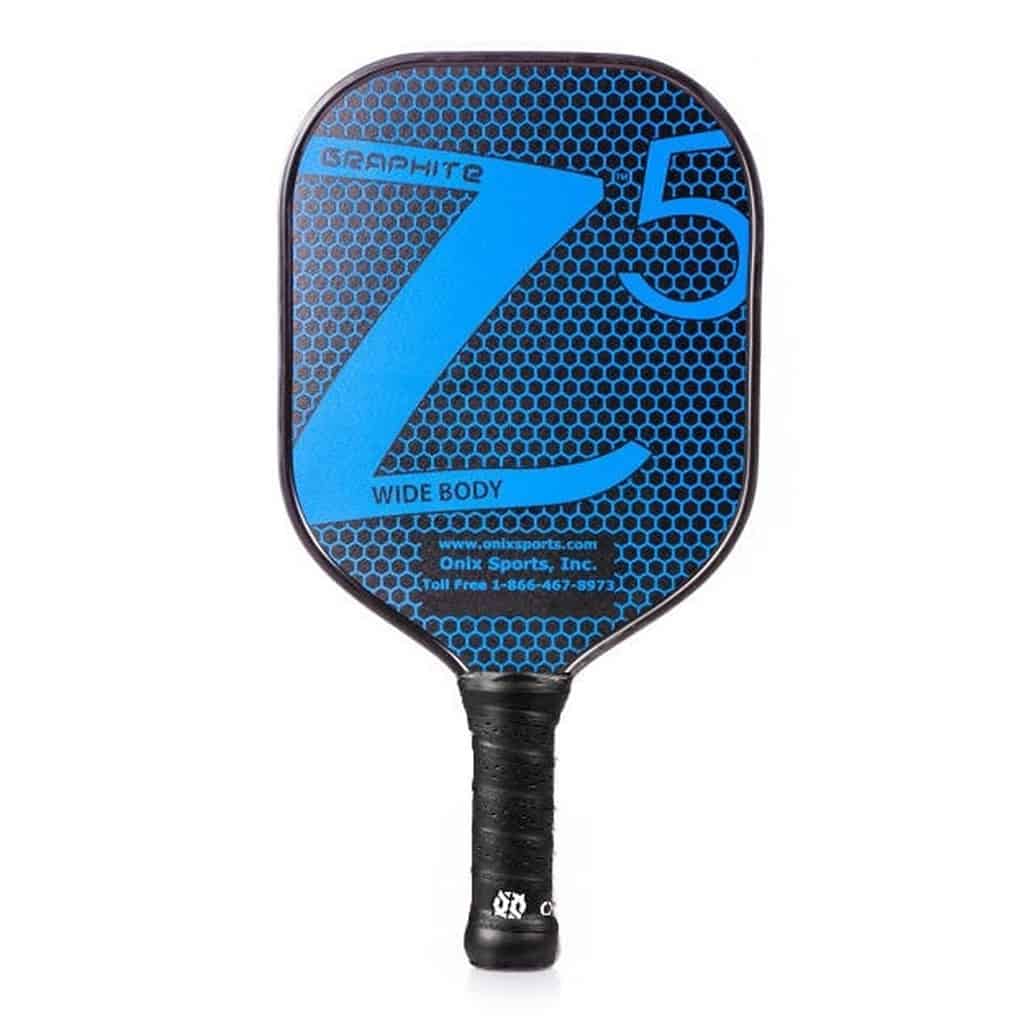
Graphite paddles are constructed using a core material such as Nomex, aluminum, or polymer, with a layer of graphite applied to both sides. These paddles are known to be moderately powerful and are suitable for players who prefer finesse over power. Graphite paddles usually have a thin layer of graphite, measuring only a few millimeters (roughly the thickness of a fingernail).
One popular graphite paddle on the market is the Onix Z5 Graphite Pickleball Paddle. The Onix Z5 Graphite Paddle is a popular choice pickleball players due to its solid feel and attractive design. It is well-balanced, has a large hitting area, and weighs between 7.5 to 8.2 ounces. The paddle features a distinctive Z design and is available in various colors. This paddle tops our list of the best pickleball paddles for beginners.
Carbon Fiber Paddles
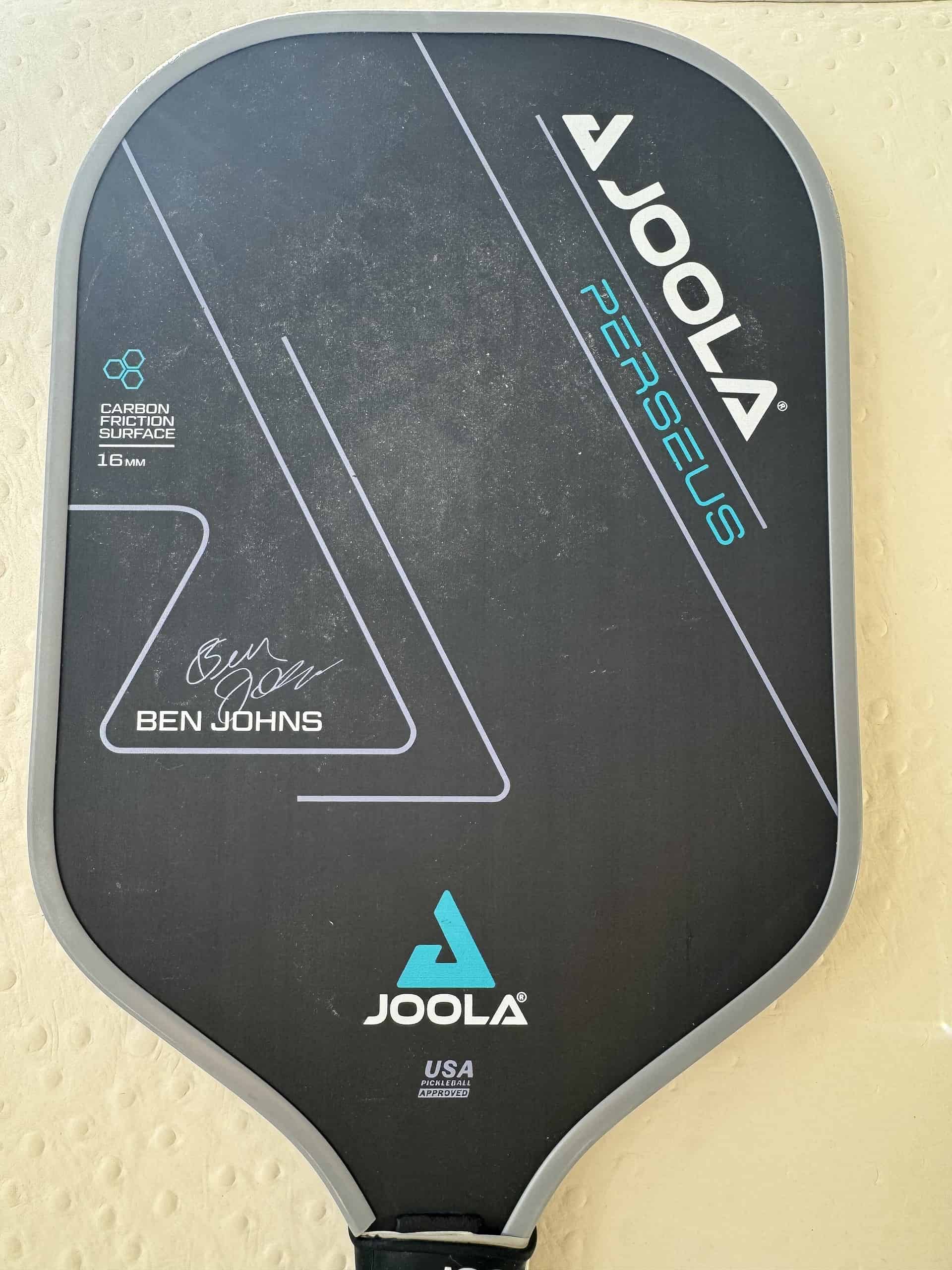
Carbon fiber paddles, a form of graphite, are composed of layered ribbons interlinked to form fibers, resulting in increased strength and rigidity while utilizing less material to achieve a lighter weight. These paddles are known for their durability, strength, and rigidity while remaining lightweight, making them a top choice for many players.
One example of a carbon fiber paddle is the Joola Perseus Ben Johns Pickleball paddle. The Ben Johns Perseus CFS 16 Carbon Fiber Paddle is the highly anticipated successor to the successful Hyperion CFS 16 paddle. It offers a combination of power and control, with an elongated shape, thick core, and stiff carbon fiber face. This paddle is designed to help players achieve their highest potential with ultimate control and precise shots.
Fiberglass Paddles
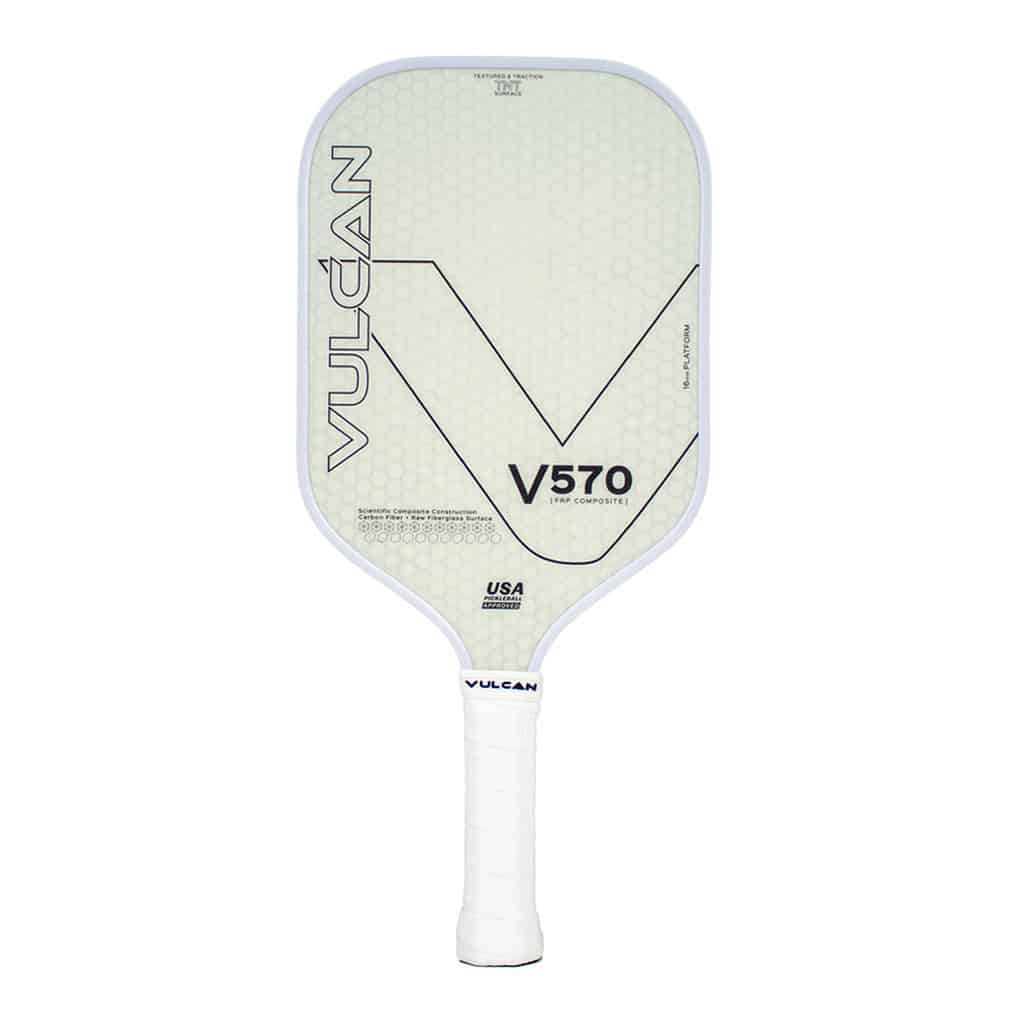
Fiberglass paddles are renowned for their durability and lightweight characteristics, making them a favored choice among recreational players. These lightweight paddles offer increased power but may not provide as much control as some players desire. Fiberglass paddles are manufactured by compressing fibers under high temperatures and pressures, followed by resin soaking to create a glass-like finish.
While fiberglass paddles provide some advantages, players who prioritize control and precision may want to explore other options, such as carbon fiber or graphite paddles, to find the perfect balance.
One example of a good fiberglass pickleball paddle is the Vulvan V570 FRP. The Vulcan V570 FRP paddle is designed to prioritize spin in the game of pickleball, offering a poppy and powerful performance with its textured raw fiberglass face and thick core.
Wooden Paddles
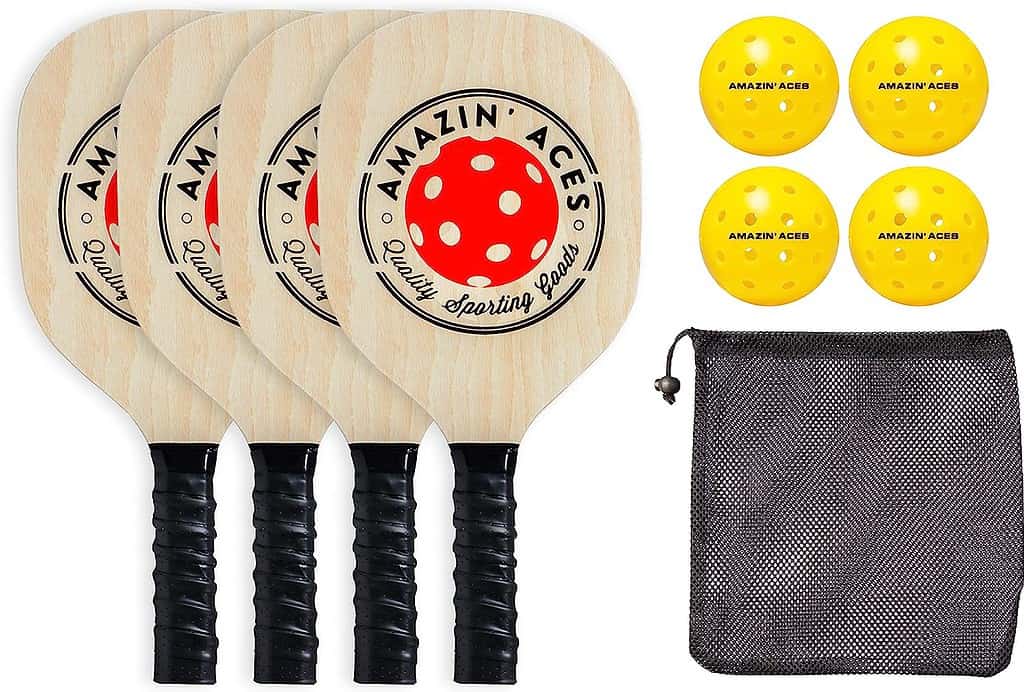
Wood paddles hold the title of the original material used for pickleball paddles. However, these paddles are not typically recommended for advanced play due to their weight and lack of performance features. Wooden paddles are obviously constructed from wood which makes them the simplest and most traditional option available.
Although wooden paddles may be suitable for beginners or those on a tight budget, they are not the best choice for players looking to improve their game or compete at higher levels. For high-level play, consider materials like graphite, carbon fiber, or even hybrid options that combine different materials for optimal performance.
Hybrid Paddle Options
Hybrid paddle options blend various materials to create unique playing experiences. By combining different face materials, such as graphite, fiberglass, and carbon fiber, hybrid paddles offer a balance between power, touch, and lightweight quality.
In the following subsections, we will explore two popular types of hybrid paddles: power and touch combinations, and lightweight quality blends.
Power and Touch Combinations
Power and touch combinations in hybrid paddles provide a balance between power and control, allowing players to fine-tune their game. By using distinct face materials, hybrid paddles can achieve this balance and cater to players who want to have the best of both worlds in their gameplay.
Hybrid paddles, such as a composite paddle, offer a unique combination of power and control, allowing players to customize their game.
Need an entire set? Check out our list of the best pickleball paddle sets under $100
Need help choosing? Check out our guide on how to choose a pickleball paddle.
Lightweight Quality Blends
Lightweight quality blends in hybrid paddles offer a combination of lightweight materials for optimal performance without sacrificing durability. These paddles incorporate lightweight materials such as graphite, carbon fiber, and fiberglass with a sturdy core material like polymer, Nomex, or aluminum.
Lightweight quality blends are an excellent choice for players who want to enjoy the benefits of multiple materials in one paddle. They provide a balance of power, control, and spin, making them ideal for players of all abilities.
Importance of Core Materials
The pickleball paddle core material plays a significant role in its performance. There are three main types of core materials: polymer, nomex, and aluminum. Each core material offers different benefits, such as power, control, and durability, which can impact your overall success on the court.
Let’s take a look at each core material and discuss their advantages and disadvantages.
Polymer Cores
Polymer paddle cores have gained popularity due to their balance of power, control, and durability. These cores are constructed from mini-units of plastic, specifically polypropylene. The Paddletek Bantam EX-L Pro is a popular polymer core paddle that features a polymer blend core and a larger sweet spot for easier ball contact.
However, the performance of polymer core paddles can vary depending on the manufacturer. Players should take the time to research different paddle brands and models to find the polymer core paddle that best suits their needs.
Nomex Cores
Nomex cores, made from a DuPont Nomex paper-coated honeycomb core, are known for their explosive power. This lightweight core material provides a significant amount of pop upon impact but has a stiffer feel than wood or polymer cores. However, Nomex paddles are also quite loud, which may be a concern for players in noise-sensitive environments.
Despite the power offered by Nomex cores, they require precision and control to avoid faults during play. Players who prioritize power and are willing to sacrifice some control may prefer Nomex core paddles.
Aluminum Cores
Aluminum cores are an excellent option for players who prioritize finesse and control over power. These cores provide more control but lack the power of Nomex and polymer cores. Aluminum cores are also quieter than Nomex paddles, making them a better choice for players in noise-sensitive environments.
Players who prioritize control and precision should consider aluminum core paddles or explore hybrid options that combine lightweight materials for optimal performance.
Choosing the Right Material Based on Your Needs
Before you buy a pickleball paddle, consider your playing style and preferences. Are you a power player, control player, or lightweight lover? By understanding your playing style and preferences, you can make an informed decision on the paddle material that will best suit your needs.
In the following subsections, we will provide recommendations for each playing style.
Power Players

Power players should consider Nomex core paddles with fiberglass face material for maximum power and performance. These paddles provide explosive power but require precision and control to avoid faults, making them suitable for players who prioritize power over finesse.
For those who want to maximize their power and performance, Nomex core paddles are made of fiber.
Control Players
Control enthusiasts may prefer polymer core paddles with carbon fiber or graphite face materials for increased control and precision. These materials offer a balance between power and control, allowing players to have greater control over their shots during gameplay.
This increased control and precision can help players make more accurate shots and better control the spin.
Lightweight Lovers
Lightweight lovers should explore aluminum core paddles or hybrid options that combine lightweight materials for optimal performance. These lightweight paddles provide more control without sacrificing durability, making them an excellent choice for players who prioritize a lightweight feel.
Paddle Performance Factors
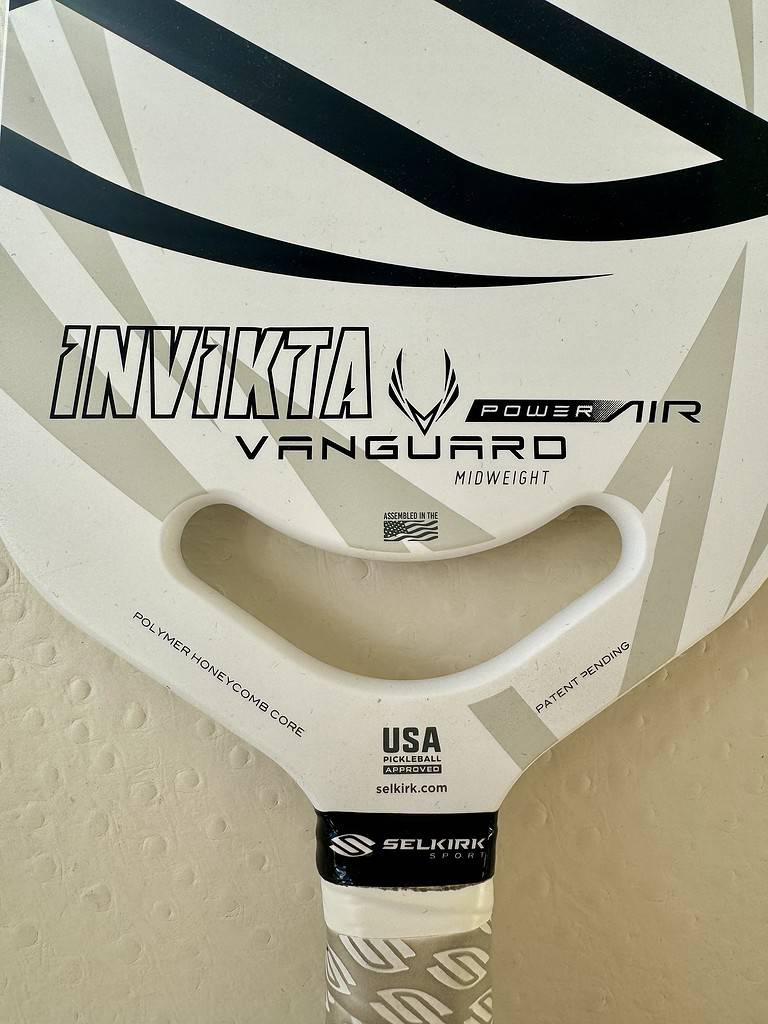
Several factors contribute to pickleball paddle performance, including weight, grip size, surface material, core material, and overall design. The weight of a paddle plays a significant role in performance, with heavier paddles providing more power and lightweight paddles offering greater control and touch. Grip size is another essential factor to consider, as it impacts the feel and control of the paddle, as well as strain on joints.
In addition to weight and grip size, surface material and core material also play a crucial role in a paddle’s performance. As discussed in earlier sections, different materials offer varying levels of power, control, and durability, making it essential to choose the right combination for your playing style and preferences.
Noise Considerations
Noise considerations are important for players in noise-sensitive environments, such as residential areas or indoor courts. Polymer core paddles are the quietest option, followed by aluminum core paddles, while Nomex core paddles are known to be quite loud.
Considering the noise level of your paddle can help avoid potential conflicts with neighbors or fellow players and ensure a more enjoyable playing experience for all.
Paddle Shapes and Sizes
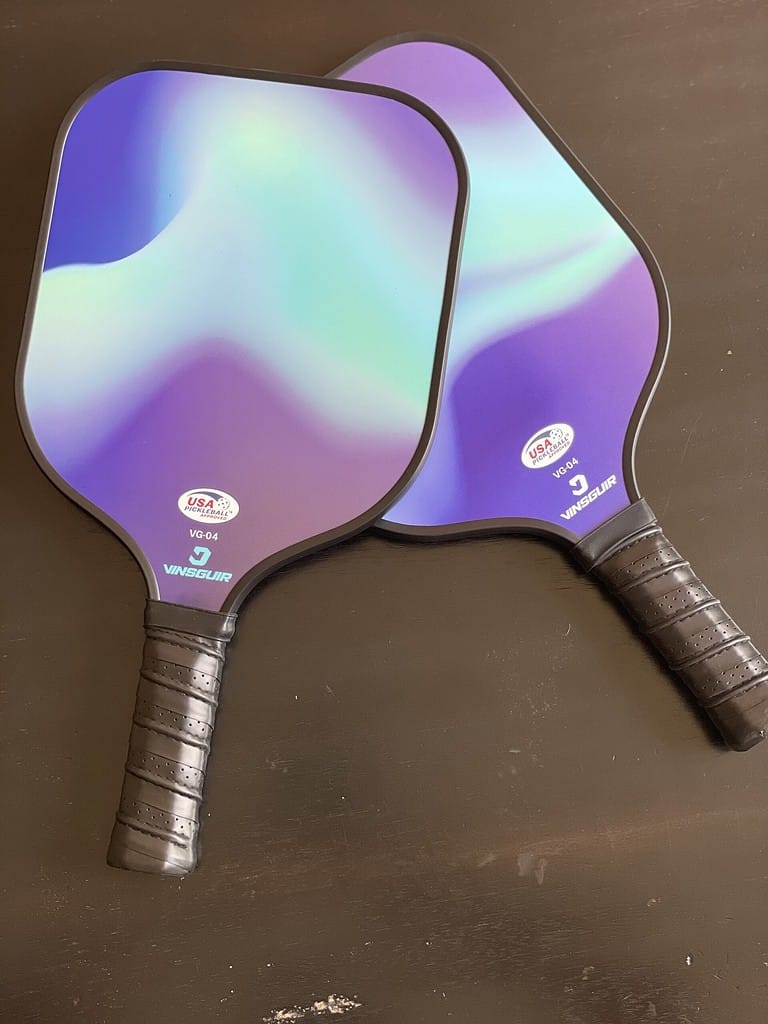
Paddle shapes and sizes vary to accommodate different playing styles and preferences. There are regular, oversized, and elongated options available, each with its advantages and disadvantages. Regular-sized paddles are the most common and offer a balance of power and control. Oversized paddles have a larger face, providing more surface area for hitting the ball, but may sacrifice some control due to the decreased handle length. Elongated paddles are longer offering more reach but with a smaller sweet spot.
When selecting the right paddle shape and size, it’s crucial to consider your playing style, preferences, and comfort. Try out different paddles can help you find the perfect fit for your game.
Budget and Price Range
Budget and price range play a role in choosing a pickleball paddle. Pickleball paddles are available at various price points, ranging from under $15 for the most economical wood paddles to $250+ for the highest quality graphite and composite paddles.
When allocating funds for pickleball gear, it’s recommended to prioritize a quality pair of pickleball shoes before investing heavily in a paddle. It’s essential to find a pickleball paddle that fits within your budget without sacrificing performance. By researching different brands and models, you can find a paddle that suits your needs and budget, allowing you to enjoy the game without breaking the bank.
How to Maintain Your Pickleball Paddle
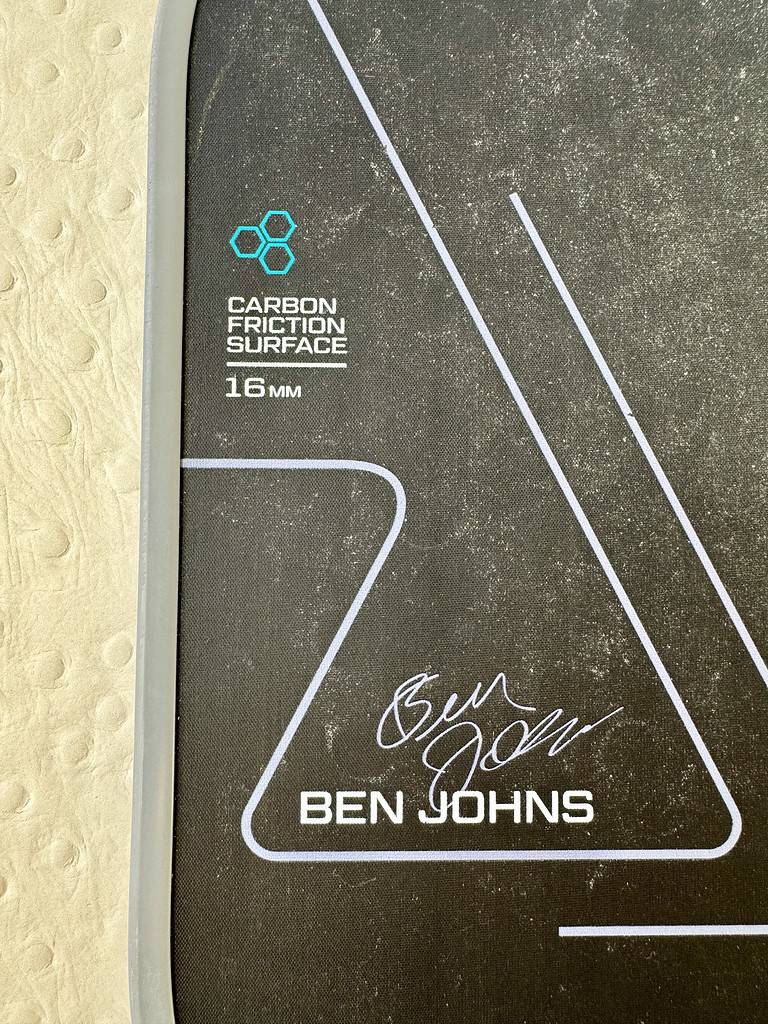
Maintaining your pickleball paddle is key for prolonging its lifespan and ensuring performance. Proper storage, cleaning, and replacement of the grip when necessary are all crucial aspects of paddle maintenance. To keep your paddle in top condition, store it in a cool, dry place away from direct sunlight, and clean the surface regularly with a gentle cleaner and soft cloth. Or, you can easily use one of these erasers!
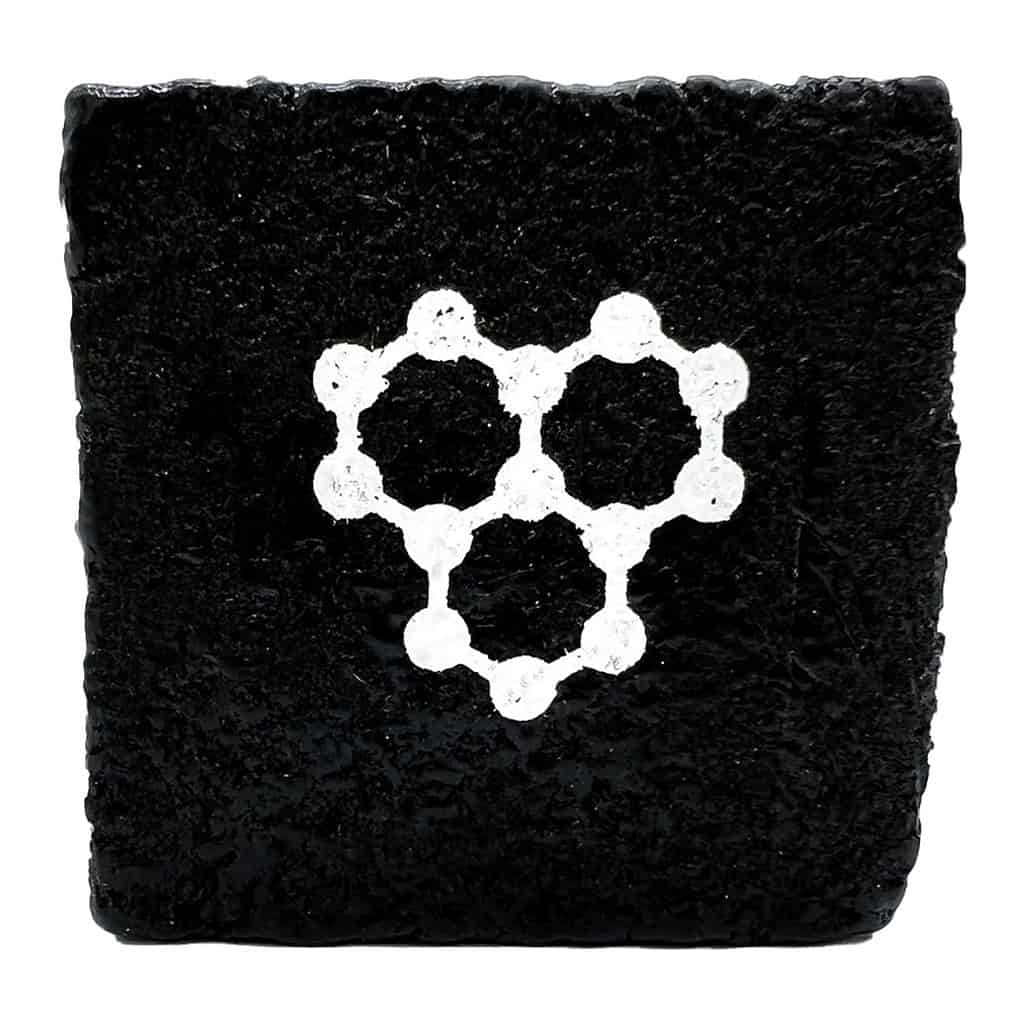
In addition to proper cleaning and storage, replacing the grip when it becomes worn or uncomfortable is vital for maintaining your paddle’s performance. A comfortable and secure grip can help improve your control and prevent strain on your wrist, elbow, and shoulder joints.
Summary
In conclusion, choosing the right paddle material is important for enhancing your performance on the court. By understanding the unique properties of graphite, carbon fiber, fiberglass, wooden, and hybrid paddles, you can make an informed decision on the paddle material that best suits your playing style and preferences.
Frequently Asked Questions
Is there really a difference in pickleball paddles?
Yes, there is a clear difference between pickleball paddles due to factors such as materials, weight, shape, craftsmanship, innovation, and sourcing.
These factors can have a significant impact on the performance of the paddle, as well as the overall feel and control of the game.
Plus, you want to look for a paddle with the USAPA Approval!
Can you make your own pickleball paddle?
If you don’t want to buy a pickleball paddle, it is possible to make your own pickleball paddle out of wood, however aluminum and carbon fiber paddles may be difficult to make on a DIY basis.
Adding an edge guard provides extra protection for the paddle’s edges.
What is the difference between graphite and carbon fiber paddles?
Graphite and carbon fiber paddles are both lightweight and strong, but carbon fiber paddles are more rigid with greater durability and strength.
What is the best core material for a power player?
Nomex core paddles are perfect for power players, providing explosive power with each shot.
They are designed to be lightweight and durable, allowing for maximum power and control. The unique construction of the paddle ensures that it will last for years, even with regular use.

